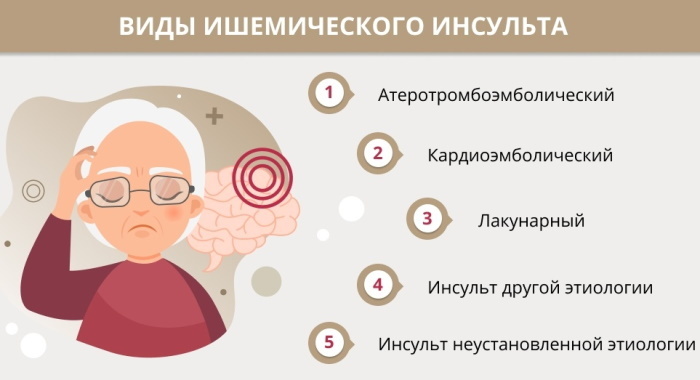Content
- What does the feeling of numbness in the back of the head indicate?
- What diagnostic methods will help establish the cause of numbness in the back of the head
- First aid and algorithm of actions for sharp numbness of the occiput
- Numbness Causes and Treatment Methods
- Migraine
- High pressure
- VSD
- Meningeal syndrome
- Fever
- Osteochondrosis
- Stroke
- Atherosclerosis
- Avitaminosis
- Traumatic brain injury
- Multiple sclerosis
- Brain tumors
- Pinching the nerves of the head
- Hypothermia
- Stress
- Numbness video
Numbness in the back of the head may occur due to a prolonged stay in an uncomfortable position or as a result of impaired blood flow in this area. To get rid of the problem, it is enough to change the position of the body or do a light massage. But in some cases, discomfort indicates the development of severe pathologies. To establish the cause of the symptom, a thorough examination of the body will be required.
What does the feeling of numbness in the back of the head indicate?
Numbness in the back of the head, the causes of which are not associated with any disease, can be considered a normal variant. Muscle overstrain can provoke the appearance of discomfort. Feeling of numbness and tingling sometimes occurs after sleep, if the person slept in an uncomfortable position or on a pillow that is too high.
Also, muscles can become numb when they are in one position for a long time, for example, when working at a computer, driving a car. In such situations, nerve endings are pinched or muscle spasm occurs, blood flow is disturbed, which leads to discomfort. Numbness is also provoked by sharp movements of the neck. In this case, a spasm of the blood vessels occurs.
A temporary loss of sensitivity in the occiput is possible as a result of exposure to certain medications. This disorder occurs after taking statins. The condition returns to normal after discontinuation of the drug. Hypothermia or stress can also cause discomfort.
What diagnostic methods will help establish the cause of numbness in the back of the head
Numbness in the back of the head (the causes of the disorder must be determined in order to select the correct treatment), which occurs rarely and quickly passes, should not be a cause for concern. But if the attacks are frequent and last more than 15 minutes, it is necessary to visit a doctor and be examined.
For the purpose of making a diagnosis, it is recommended to carry out:
- blood test. The study helps to identify a deficiency of iron and vitamin B12, which is the cause of impaired blood circulation;
-
X-ray, MRI in order to identify deformities of the spine and other pathologies in which nerve endings are pinched;
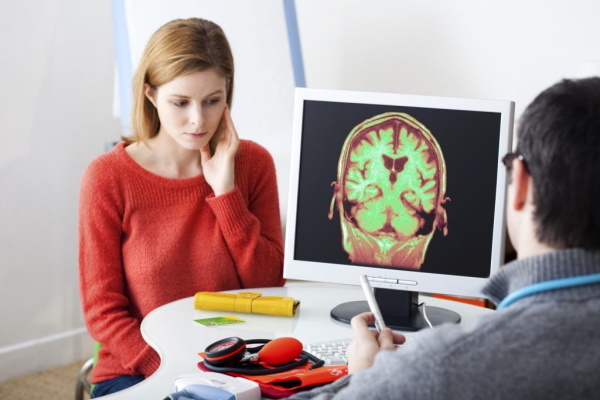
- electroneuromyography, which allows you to determine the localization of damaged nerve fibers, to identify neuropathy;
- Ultrasound and dopplerography, allowing to detect vascular pathology.
Other tests may be required depending on the presence of accompanying symptoms. If a person has suffered a skull injury, you will have to consult a surgeon and traumatologist. With pathologies of internal organs, a complete diagnosis of the body is required.
First aid and algorithm of actions for sharp numbness of the occiput
Numbness in the back of the head (the causes of the condition are often non-pathological), you can try to eliminate it without the help of a doctor.
This requires:
- Take a comfortable position so that the back of the head is not squeezed.
- Take an antispasmodic.
- If the reason was being in an uncomfortable position, change your position.
- Massage the numb area with light movements.
If numbness has arisen under the influence of a draft, it is necessary to keep the affected area warm, you can make a compress based on alcohol. If you experience discomfort after a stressful situation, you need to try to relax, take a mild sedative. If all the measures taken have not brought relief, you should consult a doctor.
Numbness Causes and Treatment Methods
Numbness of the head in the back of the head, which occurs regularly and does not go away for a long time, can be caused by some diseases, for example, multiple sclerosis, neoplasms, osteochondrosis, arterial hypertension and others.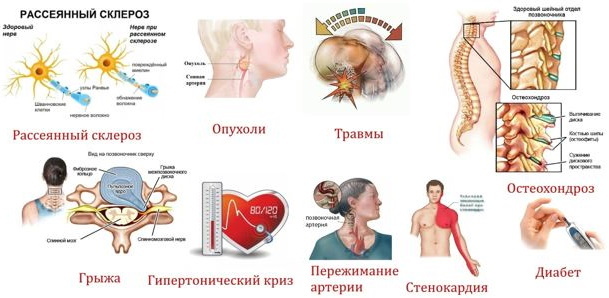
Depending on what caused the discomfort, the patient may be advised to:
- wearing a corset;
- taking anti-inflammatory drugs and analgesics;
- the use of compresses;
- carrying out massage procedures.
Sometimes the rehabilitation process takes a long time, but it is necessary to undergo a full course of treatment in order to avoid the development of complications, in some cases posing a threat to life. Situations that provoke discomfort should be avoided, since under the influence of external factors, the intensity of symptoms may increase.
Migraine
Numbness in the back of the head can occur with migraines. About 18% of women and 5% of men suffer from it. The disease is manifested by intense one-sided pain in the head.
Attacks are accompanied by additional symptoms:
- increased fatigue;
- nausea;
- a feeling of squeezing in the head.
With physical activity, the condition worsens, relief comes in the dark and at rest. In a woman, pathology may be associated with a cycle. Drug therapy can be targeted and preventive.
With short attacks of low intensity, non-steroidal anti-inflammatory drugs will help alleviate the condition:
- Naproxen;
- Ibufen;
- Ibuprofen.
If such drugs do not help or it is impossible to use them due to the need for frequent intake, then the use of triptans (Sumatriptan, Rizatriptan) is recommended. These funds are distinguished by vasoconstrictor properties, relieve swelling and compression of brain tissue. It is recommended to alternate drugs of different groups, taking into account the severity of the attack. This prevents addiction and the development of complications.
With frequent, intense attacks that interfere with daily activity, a course of preventive therapy is prescribed. This will not cure the disease, but it will greatly improve the quality of life.
It is recommended to take drugs with different mechanisms of action:
- non-steroidal anti-inflammatory drugs (short-term, due to the risk of side effects);
- antidepressants that relieve stress that can cause migraines.
It is important to establish a lifestyle. You should exclude bad habits, refuse to use certain foods that can provoke an attack, get enough sleep and avoid emotional overload.
High pressure
Arterial hypertension is a pathology that may not manifest itself for a long time. A person may suffer from increased fatigue, headaches, dizziness, numbness in the back of the head. Some patients develop swelling in the face area, the legs become insensitive to touch.
A long-term, neglected disease leads to the development of various complications, for example:
- ischemic heart disease;
- myocardial infarction;
- ischemic stroke;
- narrowing of the renal artery;
- vascular dementia.
You can prevent the further development of pathology by changing your lifestyle. The patient should get rid of excess weight, refuse to take alcoholic beverages, reduce salt intake, avoid stress, and move more. If such measures do not help, it is necessary to take antihypertensive drugs (Berlipril, Kaptopres, Anaprilin). Folk remedies (motherwort, lemon balm, peony, hawthorn) will help to improve the condition.
Medications for high blood pressure will have to be taken for life. But in some cases, even high doses of drugs do not give the desired effect, therefore, when diagnosing a pathology, it is important to establish the specific cause of the disorder. After its elimination, the condition returns to normal without the use of drugs.
VSD
Vegeto-vascular dystonia is not an independent disease. This is a multisymptomatic syndrome that manifests itself as malfunctions in the work of various organs.
The symptoms of the disease are varied. They can appear alone or in combination with other disorders. A person may suffer from dizziness, ear congestion. Often the pressure rises or falls, blood flow is disturbed, the head grows numb, including in the back of the head.
There is no general scheme for the treatment of VSD. To improve a person's condition, it is recommended:
- avoid stress;
- take vitamins;
- attend physiotherapy sessions;
- swimming, walking, exercising.
Meningeal syndrome
This pathology is characterized by the appearance of a complex of symptoms indicating damage to the cerebral membranes of the brain. The patient may have numbness in both parts of the head or in the back of the head.
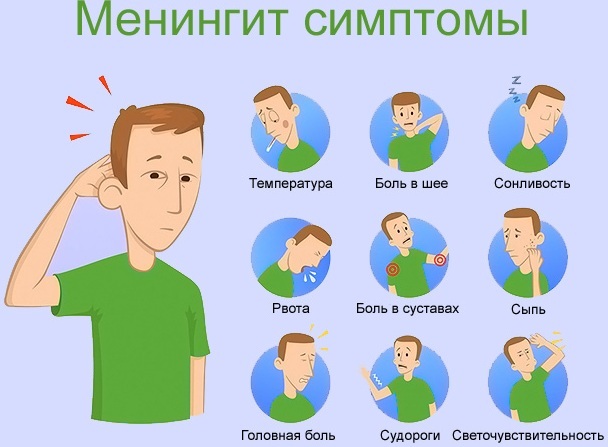
In addition, the patient suffers from:
- headache;
- nausea;
- vomiting;
- photophobia;
- short unconsciousness.
In the area of the cervical spine, stiffness is felt, it is difficult for the patient to tilt his head. But at the same time, the movement to the sides is not disturbed.
Treatment consists in eliminating the cause of the disease. After that, all clinical manifestations disappear. If the pathology is provoked by bacteria, broad-spectrum antibiotics are used. With the viral origin of the disease, the patient is prescribed antiviral agents, and with the fungal - antimycotics. To prevent the development of cerebral edema, the use of diuretics, glucocorticosteroids is recommended.
Symptomatic therapy:
| Symptom | Group of drugs | Names |
| Hyperthermia | Antipyretics |
|
| Arterial hypertension | Antihypertensive drugs |
|
| Vomit | Antiemetics |
|
| Psychomotor agitation | Psychotropic drugs |
|
Fever
At a high temperature, in addition to headache, other symptoms appear. The patient may have numb skin in the back of the head, muscle stiffness occurs.
An increase in temperature can be caused by:
- infectious diseases;
- autoimmune pathologies;
- tumors;
- increased activity of the thyroid gland;
- tissue damage;
- heatstroke.
To eliminate the symptom, it is necessary to cure the underlying disease. Antipyretic drugs (Paracetamol, Ibuprofen) are used as symptomatic therapy.
Osteochondrosis
With this disease of the cervical spine, the functionality of the intervertebral discs is lost. Due to the fact that the nerve endings and blood vessels are pinched, the blood flow and innervation of the nervous system are disrupted.
The disease manifests itself:
- numbness of the back of the head;
- dizziness;
- pressure surges;
- deterioration of vision;
- headache.
Numbness in the back of the head, the causes of which are associated with osteochondrosis, can be easily eliminated with the help of means that normalize blood flow.

Also, patients are recommended to use:
- non-steroidal anti-inflammatory drugs. They can be used topically (ointments, gels) to eliminate pain and inflammation (Diclofenac, Finalgon);
- steroid drugs in the form of intramuscular injections;
- muscle relaxants to eliminate muscle spasms (Midocalm);
- B vitamins to improve metabolic processes;
- novocaine blockade with severe pain.
Stroke
Acute violation of cerebral circulation occurs as a result of blockage or rupture of blood vessels in the brain. In this case, the patient may experience numbness not only of the occiput, but also of the entire head and limbs.
Also, the condition may be accompanied by:
- movement disorders;
- loss of sensitivity in some areas of the body;
- speech disorders;
- a sharp headache;
- vomiting;
- confusion, loss of consciousness;
- complete or partial paralysis.
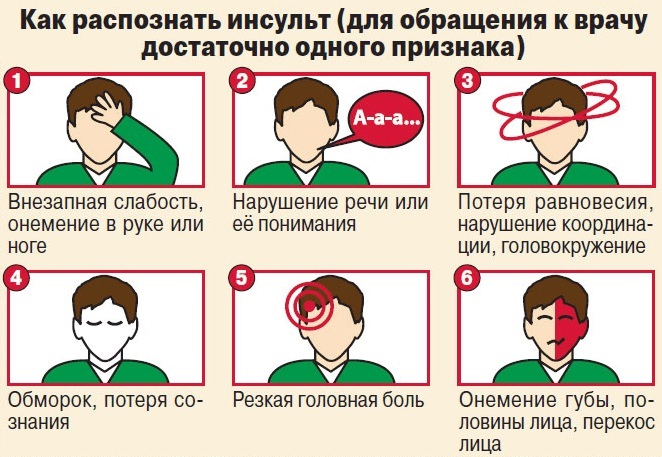 If you have at least a few of the listed symptoms, you need to call an ambulance. Before her arrival, the patient should be comfortably laid down so that the head is slightly raised. Treatment is carried out only in a hospital, where the patient must be delivered as quickly as possible.
If you have at least a few of the listed symptoms, you need to call an ambulance. Before her arrival, the patient should be comfortably laid down so that the head is slightly raised. Treatment is carried out only in a hospital, where the patient must be delivered as quickly as possible.
Atherosclerosis
Numbness of the occiput can also be observed with atherosclerosis. This is a pathology characterized by the deposition of cholesterol plaques in the vessels that interfere with normal blood circulation. Due to insufficient blood supply, the nutrition of the body cells is disrupted.
The plaque can come off the vessel wall, leading to blockage. In this case, the blood ceases to flow to the brain, the patient suffers from tinnitus, dizziness, loss of sensitivity in the occiput or other parts of the head. Vision may decrease, memory deteriorate, and in the most severe cases dementia develops.
For the purpose of treatment, it is necessary to adjust the lifestyle. The patient must adhere to a fat-restricted diet, be physically active, give up bad habits, avoid stress, and treat chronic diseases.
Of the drugs, doctors usually prescribe hypolipidemic, antiplatelet, antihypertensive and antioxidant drugs, drugs that improve microcirculation. Treatment is long-term, success depends on the stage at which it began. In some cases, there is a need for surgical therapy.
Avitaminosis
Another reason for the loss of sensitivity in the occiput is the lack of B vitamins and certain minerals (calcium, magnesium, potassium). Due to the deficiency of such substances, nerve cells and fibers are damaged, which leads to muscle spasm, a feeling of numbness.
Self-massage of the cervical spine or light warm-up helps to get rid of unpleasant sensations. To make up for the lack of necessary components, you first need to pass an analysis to determine their level. After that, the doctor will recommend taking vitamin complexes, as well as probiotics for better absorption of nutrients. The patient will have to give up alcohol and smoking, sweets, fried foods and include more vegetables and fruits, dairy products, vegetable oils, nuts in the diet.
Traumatic brain injury
Traumatic brain injuries are common causes of pain in the head and numbness in various parts of the head. You can get hurt in an accident, at sports events, in an emergency at work.
In addition to throbbing pain and numbness, trauma is accompanied by other symptoms:
- nausea;
- dizziness;
- vomiting;
- darkening in the eyes.
To eliminate pain, the patient is recommended to take painkillers, for example, Analgin, Sedalgin.
Multiple sclerosis
In multiple sclerosis, nerve tissue is replaced by connective tissue. This leads to a feeling of numbness in the head, including in the back of the head, loss of sensitivity in the limbs, decreased muscle tone, and impaired coordination of movements.
To diagnose and select a treatment regimen, you must contact a neurologist. In the acute stage of the disease, your doctor will recommend taking cortisone to reduce inflammation. During the period of remission, immunosuppressive drugs (Azathioprine, Methotrexate) are prescribed.
Brain tumors
With the growth of tumors of the head or spine, nerve endings and blood vessels are squeezed. The patient suffers not only from numbness, but also from intense pain.
The condition is aggravated by other symptoms:
- dizziness;
- nausea;
- lack of coordination;
- memory impairment.
Oncologists and neurosurgeons are involved in the treatment of such pathologies.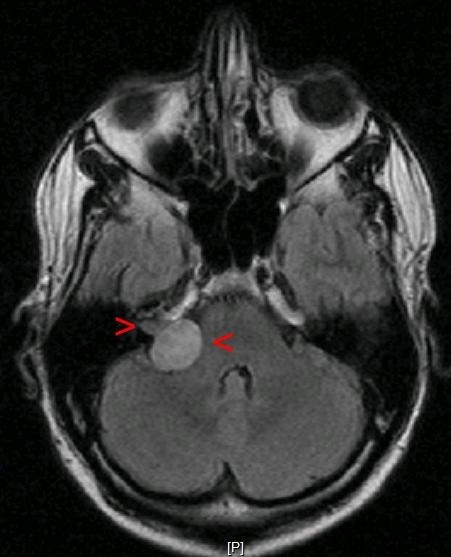
The fight against neoplasm is carried out using:
- surgical intervention;
- chemotherapy;
- radiation therapy.
Pinching the nerves of the head
Infringement of the occipital nerve, in addition to numbness, is accompanied by sharp pain when turning the head, pain in the neck, intolerance to bright light. The cause of the disease is the inflammation of the surrounding tissues. If discomfort occurs, you should consult a neurologist. After the examination, the doctor will prescribe glucocorticoids Kenalog, Metipred. With severe pain, novocaine blockade is prescribed.
Hypothermia
Hypothermia is more common in children or the elderly. Due to the slowing down of blood circulation, numbness occurs in the back of the head or another area of the head. Unpleasant symptoms are aggravated by hunger or overwork, in patients with weak immunity, vascular diseases, with mechanical damage, bleeding.
First of all, with hypothermia, it is necessary to stop the loss of heat. The victim must be covered with a blanket, warmed with a heating pad or with your own body, and the frostbitten areas must be rubbed. It is strictly forbidden to use a hot bath or shower, rub the patient with snow or drink alcohol. After the tissue sensitivity returns, the person needs to be given pain relievers. In case of severe hypothermia, seek medical attention.
Stress
Under the influence of stress, the body tenses, which can lead to numbness on the right or left side of the head, back of the head, lower jaw, and lips. In addition, with a strong emotional shock, the brain suffers due to vasospasm and insufficient blood supply, which can also cause unpleasant symptoms.
To prevent unpleasant consequences, the stress factor should be eliminated first. You can also improve the condition with the help of physiological procedures, psychological correction, taking sedatives (Persen, Alora, Novopassit), sedative decoctions. In extreme cases, antidepressants and tranquilizers are prescribed.
Numbness of the head in the back of the head sometimes indicates the development of a disease in the body. It is necessary to be wary if the discomfort does not go away for a long time and is accompanied by additional symptoms, for example, light-headedness, nausea, impaired motor functions or speech.
Such signs are a reason to seek medical help in order to establish the cause of the deterioration of the condition. It is impossible to delay the visit to the doctor, since some diseases and conditions can even threaten the patient's life.
Numbness video
Causes of pain in the back of the head:



